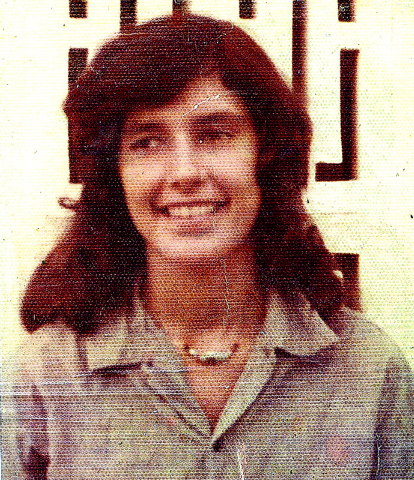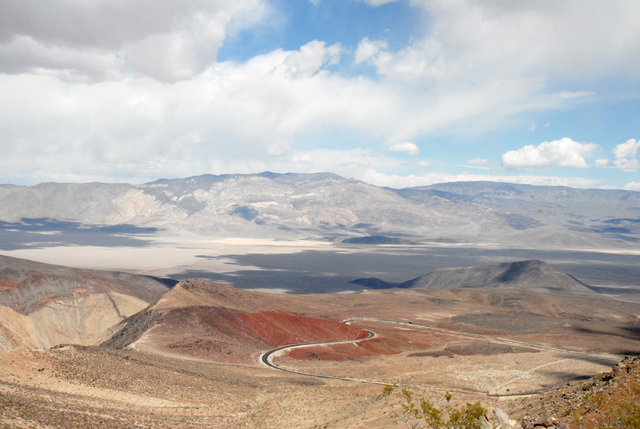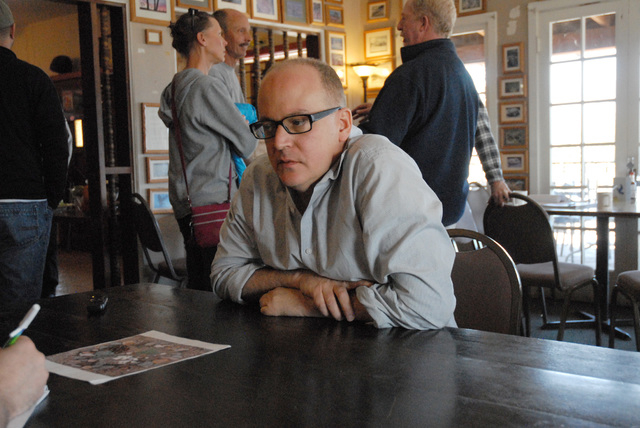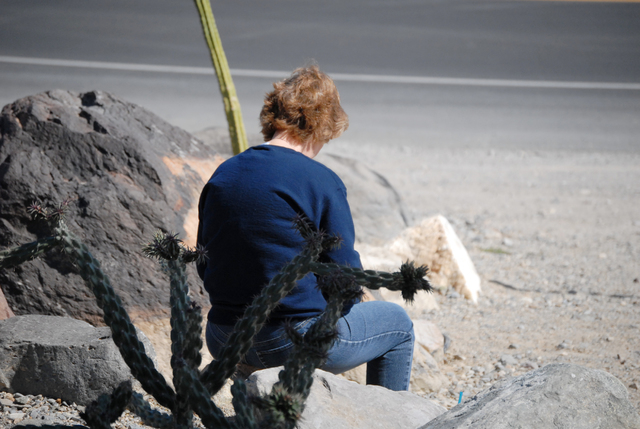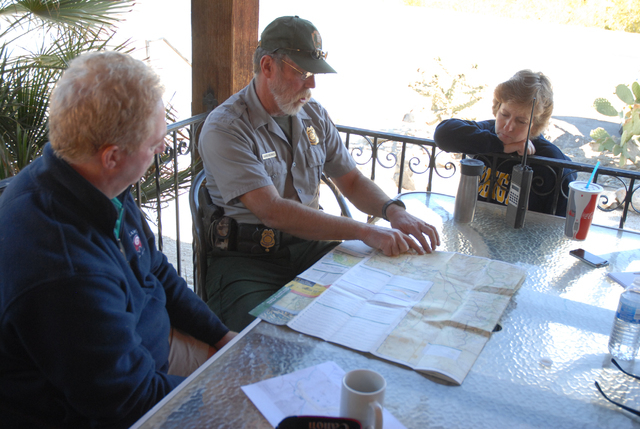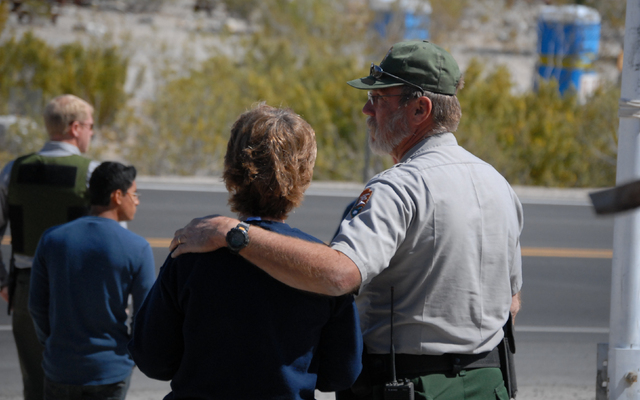MISSING AMALIA: Family pushes for new search in 1998 disappearance of California cult members
Her mother named her Amalia. New age guru Carlos Castaneda named her Talia Bey.
Her mother gave her life. The literary hoaxer turned cult leader’s final gift was most likely death.
At least this is the conclusion some of Amalia Marquez’s family members are just now reaching, 16 years after she disappeared from Southern California along with three other still-missing women, Castaneda’s “witches.” A fifth woman’s remains were discovered in Death Valley in 2003. She, too, was intimately connected to Castaneda, who christened her his “Blue Scout.”
Amalia would have turned 59 last Friday.
An eerie coincidence to be sure. Because on her birthday two of her cousins, David Marin and Sarah Gutierrez, checked into a room at the Panamint Springs Resort, which sits along California’s State Route 190 on the southern edge of Death Valley National Park.
They hoped to spend the following day searching for their cousin’s remains in the expanse of desert nearby, joined by a New York writer named Robert Marshall and Jennifer Stalvey, a private investigator who specializes in infiltrating cults.
The search never happened. Miscommunications with park service honchos and the Inyo County Sheriff’s Office turned what seemed to be a well-planned, months-long effort into an exercise in bureaucratic frustration on one level, sweet catharsis on another.
The questions, though, remain.
WHERE IS AMALIA?
Is she dead?
Did it end like Don Juan Matus, with an intense fire, the burning rising from the seat of her being, exploding into a ball of light, catapulting her into what Castaneda followers call the “second attention?”
Or, was that ball of light the flash of a pistol?
Was it the final, flickering, electrical gasps of her brain’s synapses as she plunged to the bottom of a Death Valley mine shaft?
Or is she, in fact, still alive?
She disappeared days after Castaneda died of complications of liver cancer on April 27, 1998. She took his ashes with her.
“He was supposed to turn into a ball of light, burn from within and go up to heaven. He got liver cancer and instead of burning from within he died and was burned from without at the Culver City (California) mortuary,” says Marshall, who wrote a 2007 story about Castaneda’s dark legacy for Salon.com. Marshall is working on a biography of the man, loved by millions in the 1970s for a series of books about the teachings of a Yaqui Indian sorcerer, Don Juan Matus.
The names of the other missing women are Regine “Gina” Thal, alias Florinda Donner-Grau; Maryann Simko, aliases Anna Marie Carter and Taisha Abelar; Dee Ann Jo Ahlvers, alias Kylie Lundahl; and the fifth woman, Patricia Partin, alias Nuri (sometimes Nury) Alexander. Unlike Amalia, the other women were mostly longtime Castaneda followers and concubines, meeting the man at the height of his fame. Amalia didn’t come along until the early 1990s.
Castaneda forced his closest followers to go by aliases and distance themselves from their families; the tactic has served to complicate efforts to find the missing women.
Amalia’s cousins reached out to Marshall last fall when Marin found his story in a Google search.
“I sent an email to Robert saying I’m a cousin, is there any news and he said no, but I really wish they would have searched that mine. I sent an email and said what mine and he said this mine. Within 72 hours I contacted the park service, the sheriff’s office, the search dogs people and started looking for miners, because search and rescue in Inyo County blew me off when I contacted them,” Marin says.
The group was especially looking to search the Big Four mine, an abandoned enterprise that sits at the base of Panamint Butte. A dirt road off State Route 190 runs through a sandy-colored dry lakebed for several miles, past the blackness of Lake Rock, dead-ending at the lower portion of the mine.
The Panamint Dunes rise above the valley floor a few more miles away. It was on the edge of these dunes that hikers discovered skeletal remains in 2003, five years after a red Ford Escort was found abandoned at the end of that lonesome dirt road leading to the Big Four.
It wasn’t until 2006 that DNA testing confirmed that it was Partin’s bones that were found. It was her car, too. Even though authorities learned after Partin was positively identified that she’d disappeared with four other women, no official search for the remains of the others was ever done. Even getting Amalia listed as a missing person was a battle from the start.
Amalia’s younger brother, Luis Marquez, himself a former Castaneda follower, says nobody would help him until Partin was identified.
“After Carlos Castaneda died, they kept his death secret for three or four months. I don’t know how long. Then it came out in the news that he had died. Maybe three months before. That’s how we found out. We tried to reach Amalia, my sister. But she wasn’t available anywhere. Later, maybe a year later or so, some people called and told us all the women had disappeared. They might have killed themselves. So we immediately went to Los Angeles and we tried to approach Cleargreen ... Nobody wanted to help.”
Cleargreen is the name of a for-profit organization founded in 1995 by Castaneda and his followers. The company travels around the world hosting seminars and lectures and teaching Tensegrity, a catalogue of ritualistic, new age body movements, similar to Tai Chi. Calls to Cleargreen for comment on this story were not returned. Before her disappearance, Amalia was president of Cleargreen.
MISSING PERSONS REPORT
Luis eventually turned to the Los Angeles Police Department for help, almost to no avail.
“We tried to file a missing persons report a few times and they didn’t want to do it,” he said. “They took it, many years after they went missing. It was a big fight.”
The slowness of authorities to treat the women’s disappearances seriously may have permanently damaged any chance the family has of closure, Luis said.
“They have made any possible investigation useless because of the time that has gone by. So much time has gone by, I hardly think anything can be done,” he said.
Amalia’s family’s focus on the Big Four stems from a photo a hiker posted online. It appears to be a makeshift shrine — a circle of rocks that resembles a campfire ring with multicolored glass shards laid out in equal colored parts; five colors for five women — at the entrance to the mine. Could it be where Amalia and the other women consummated a suicide pact?
One experienced park ranger, David Brenner, who happened to have found Partin’s car in 1998, doesn’t believe it. He sat down with Marin and his sister and explained how the mines in the area are abandoned, but almost continuously explored by spelunkers, government mine mappers and trespassers. He says the mines in that area have been searched hundreds of times.
“To be honest, the Big Four Mine isn’t even that big,” he told the group.
Marin says while he appreciates Brenner’s assistance, he’s discouraged by what he calls contradictory information from park service employees.
“Here’s the challenge that we have. We have two members of the park service who say two completely opposite things. The one who helped me initially says, yeah, explore the mines, and shafts are a great place to disappear. David Brenner says the mines have already been explored hundreds of times and the shafts aren’t even vertical. We seek out the opinions of experts and they tell us two opposite things,” he said.
Marston Motweiller, a retired Inyo County Sheriff’s investigator who worked Partin’s case, told Marin that the mines should be searched. When Marin initially reached out to Inyo County authorities a few months ago, they seemed to agree, assigning a detective named Dan Williams to the case. Williams was gung-ho about solving the mystery.
By the time Marin and Gutierrez were prepared to travel to Death Valley, that enthusiasm had dissipated. Inyo County Sheriff Bill Lutze appears to have pulled the plug on any effort.
In an email sent to members of their party shortly before they arrived, he disputed Marin’s version of events.
“All contacts made included inquiries only — no definitive requests for assistance were made prior to March 28th. Mr. Marin was contacted by Undersheriff Keith Hardcastle on March 31st, 2014, and Marin explained his request. Mr. Marin was advised that the Sheriff’s Office did not have an open case or any missing person’s cases fitting the description he provided,” the sheriff wrote.
Providing a brief glimmer of hope, the sheriff confirmed he would share information with the park service after a review of the pertinent case files.
Asked via email why the sheriff’s office never searched the area for the other missing women after Partin’s remains were finally identified, Lutze didn’t respond. No one from Inyo County showed up last week to explain their position in person. A request for comment was left with Williams for this story but was also ignored.
A spokesperson for Death Valley’s Chief Park Ranger Karen McKinley Jones confirmed that Marin had spoken to a park service employee about searching the mines but that the employee’s version of the conversation did not match Marin’s. The spokesperson said no one in the park service would ever advise anyone to go into an abandoned mine for safety reasons.
Jones and other park rangers met with Marin and his sister for several hours, explaining that without the proper permits they could not conduct any type of search. But the rangers did provide the group a roadmap for acquiring permits, a seemingly daunting task once laid out.
Brenner suggested the group get a permit to use a drone to search the area for more of Partin’s remains — not all of her was found — though clearance from the Federal Aviation Administration would likely be required.
Marin and Gutierrez were grateful for the advice, but a sense of hopelessness quickly set in.
“The whole experience was emotionally blanching,” Marin said.
Now the group is weighing its options, which include filing for the required permits, or taking a different tack altogether, including tracking down former and current Castaneda and Cleargreen members who may know what happened.
“Robert (Marshall) thinks there are probably at least five people who know what happened. But getting them to tell you the truth is the problem,” Marin said.
A GIRL NAMED AMALIA
Amalia was among a group of young girls who grew up in the same family together, lots of cousins as well as a sister. Gutierrez remembers her demonstrating a fiery, independent streak from an early age.
Amalia was smart, too. She graduated from high school a year earlier than her peers. She traveled down the Amazon River by herself. She had a keen business sense and was generally much-loved by those who knew her.
Gutierrez was immensely fond of her cousin.
“I named my daughter after her,” she says.
Her daughter was born just about the time Amalia was becoming more and more immersed in Castaneda’s cult. A card congratulating Gutierrez on giving birth is one of the last times she heard from her.
“Sarita,” the card begins, “Congratulations on the ‘new kid on the block’-Amalia. This is to wish you and your family the best of all and to Amalia a very warm welcome to the world. Knowing she is in good hands may her life be full of beautiful and peaceful things. Take care, always, Amalia.”
A few years later, Amalia would call her mother in Puerto Rico, where she was originally from, and ask for all of the family photos with her in them. She wanted to destroy them.
It was then that the family realized Amalia was not simply working and traveling with some “flaky” group, but that something was wrong.
When Amalia’s father lay dying some time later, he desperately wanted to hear her voice one last time. A call to Cleargreen was answered by a stranger, who supplied a brisk, “she knows her father is dying,” and nothing more.
Amy Wallace, a Castaneda insider who wrote a 2003 book about her experience inside the cult titled “Sorcerer’s Apprentice: My Life With Carlos Castaneda,” recalled how Castaneda ridiculed Amalia for being too close to her family after that phone call about her dad. Her personal relationships were baggage that she needed to shed if she were to conform to his teachings.
In the end, that’s exactly what she did. Her loved ones today are sure it got her killed.


